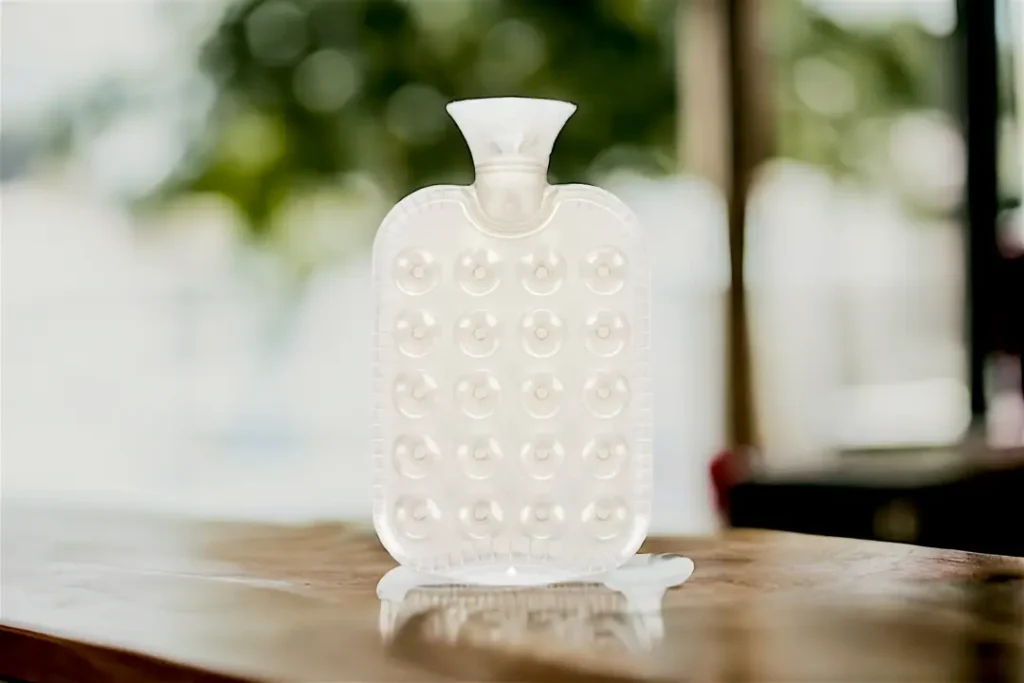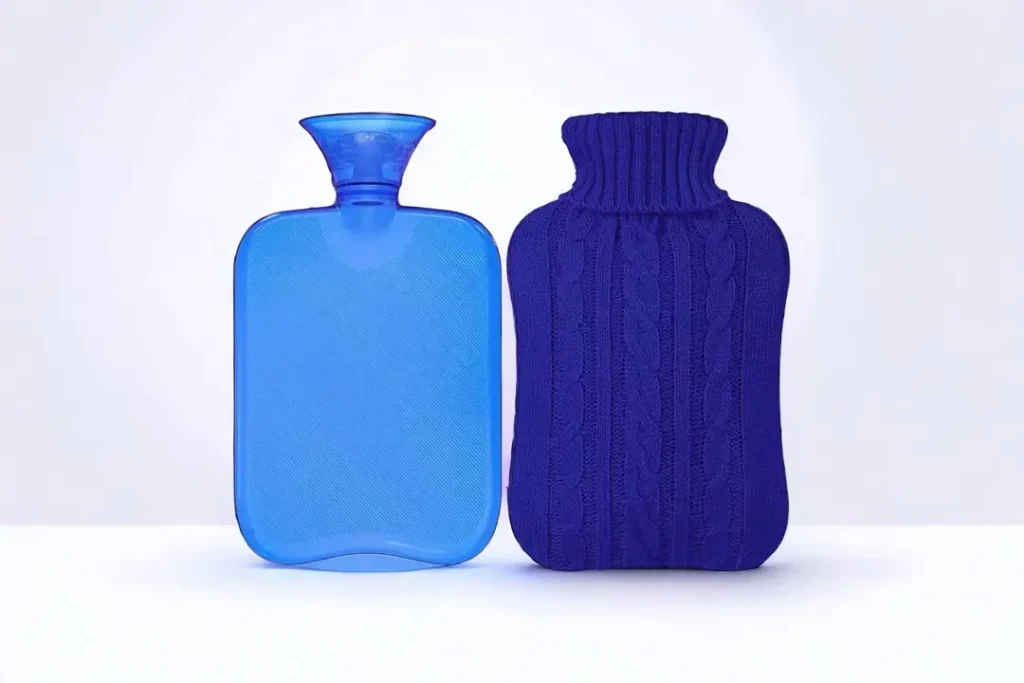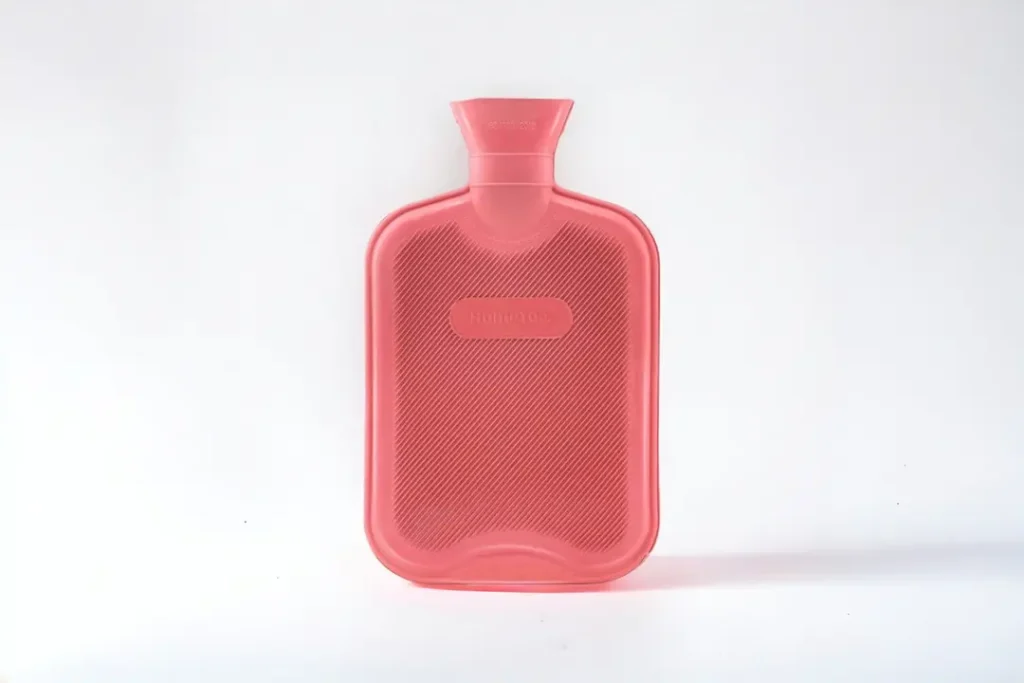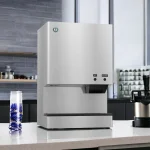Hot water bottles are containers made of rubber, or any high-grade thermoplastic material, for heating. The bottle is filled with hot water and stopped, to be placed upon the body and diffusion of its heat takes place. Though historically it was used to warm beds, these modern hot water bottles find different purposes including pain management for muscle aches, menstrual cramps, and stress-induced tension.
Key Features:
- Material: Usually rubber or PVC.
- Safety: Features a guaranteed leak-proof stopper.
- Versatile: it can provide heat, or, when full of cold water, can serve as a cold compress.
Benefits:
- Pain Management: Offers relief for minor muscle aches and pains using heat therapy.
- Comfort: Improves sleeping during chilly nights because one gets to be warm in bed.
- Pain Management: Offers relief for minor muscle aches and pains using heat therapy.
- Comfort: Improves sleeping during chilly nights because one gets to be warm in bed.
- Environment-Friendly: Replaces disposable heat packs in a more intelligent way. Replaces disposable heat packs in a more intelligent way.
These are effective, simple, and traditional bottles that are valued in many households for their therapeutic value and eco-friendly nature. Some of the main features inbuilt quality for hot water bottles to look for are some indicators regarding material type, capacity, and additional safety features. Following are five top-rated hot water bottles:
Top 5 Hot Water Bottles
1. Fashy Transparent Classic Bottle

- Material: Thermoplastic; Odor (Odorless and recyclable).
- Specifications: One side ribbed for extreme heat; one side smooth for moderate warmth. Fitted with a wide ring for easy filling.
- Capacity: Approx. 1.2.
2. Attmu Classic Rubber Transparent Bottle

- Material: High-grade rubber.
- Features: Clear design for accurate reading of water level; with a knit cover.
- Capacity: It has a capacity of about 2 liters, which is perfect for insulation and safety.
3. HomeTop Premium Classic Rubber Bottle

- Material: Natural rubber.
- Features: Soft fleece cover; traditional design. Great heat retention.
- Capacity: 2 liters; ideal for long hours of heat retention.
4. All one tech Transparent Classic Silicone Bottle

- Material: Eco-friendly silicone, BPA free.
- Features: It has features such as being microwave safe, leak-proof, and coming with a knit cover.
- Capacity: 1 liter—ideal for quick and easy boiling.
5. Peter Pan Long Bottle

- Material: Rubber of the highest quality is used.
- Features: Versatile use with an extra-long design for wrapping around the shoulder or abdomen.
- Capacity: The product has a capacity of about 2 liters of water and gives warmth for quite some time.
Every hot water bottle entails so many different specifications: safety, types of materials, and suitability for one’s needs, like easy heating in a microwave. Customer reviews and product details will help you choose the best to go for in these.
Common Use Cases for Hot Water Bottles
1. Pain Relief:
- Muscle Relaxation: Insert into a fitted hot water bottle that will loosen and relax sore muscles to minimize pain.
- Period Pains: Place a heat source on the lower belly for pain reduction.
- Arthritis Pain: The gentle heat of a hot water bottle can cause the body to stiffen and give pain relief.
2. Warming the Bed:
- Cold Nights: In this case, a hot water bottle can be put in the bed ahead of time, and this will warm the sheets beforehand. This is a perfect idea for a cozy, inviting bed.
- Reducing Heating Costs: A hot water bottle cuts heating bills because you don’t have to heat up your whole house.
3. Stress and Anxiety Relief:
- Comforting Heat: The heat on a hot water bottle could be comforting, which reduces stress and relieves anxiety.
- Comforting Presence: The presence of a warm hot water bottle can create a comforting, secure feeling, especially during stressful times or at night.
4. Cold Compress:
- Injury Rehabilitation: Simply fill it with cold water and it serves as a much-needed ice pack to bring down swelling and inflammation.
- Fever Relief: The cold water bottle can ameliorate body temperature in ailments like fever.
5. Medical Applications:
- Physical Therapy: Incorporated in therapeutic treatment to aid rehabilitation exercises.
- Postoperative Care: Heat applied locally has the effect of reducing muscle tightness in an area; hence, after surgery, it reduces pain.
Hot water bottles are versatile tools and good to use for thermal comfort and pain release in various everyday and medical uses. They are principally cherished due to their simplicity and efficacy in non-invasive therapy.
It will assist in the building of a buying guide for hot water bottles, so what to look for in getting a dependable, safe, and efficient hot water bottle. The following are key factors you should consider when purchasing a hot water bottle:
Hot Water Bottle Buying Guide
Material
- Rubber: Rubber hot water bottles are a common, traditional model. They seem to have great heat retention based on their rubber material, but sometimes there is an initial rubber smell.
- Thermoplastic: Odorless, with these items, one is bound to have recyclable elements and, in most cases, higher durability than rubber. Some are even phthalate-free, making them a healthier option.
- Silicone: A soft, flexible material that is microwave-safe. Silicone bottles may warm up rather fast while in a microwave and are usually more durable and puncture-resistant.
Safety Features
- Quality Seals: Check bottles for stoppers that do not leak and seams that are firmly sealed to avoid burns from unintended spills.
- Certifications: BS1970:2012 British Safety Standard, certifications that indicate the product is in compliance with this standard.
- See-Through: Some of the bottles are transparent, and this enables one to notice the water level while at the same time being able to notice if it’s clean inside.
Capacity
- Standard Size: Most hot water bottles hold two liters of water, hence they have very general uses such as bed warming and muscle relaxation.
- Small Size: Smaller bottles (about 0.5 to 1 l) are useful to apply to a small area, such as the neck or lower back, or for children.
Cover
- Included Insulators: A majority of the bottles come with a cover to prevent direct skin contact with the hot surface. The insulators can be made of various materials, including fleece, knit, or plush fabric.
- Removable and Washable: Easily replaceable and washable covers keep it hygienic while in use and add further months to the life of the bottle.
Design and Ergonomics
- Flat or Ribbed Surfaces: Some bottles are designed with ribbed surfaces to allow for gentle heat diffusion, while others have flat surfaces for intense warmth.
- Handles and Straps: Integrated handles or straps help hold or secure the bottle in place when in use.
Ease of Use
- Wide Mouth: It has a wide mouth, so you can fill your bottle without spills and even prevents burning accidents.
- Microwave Safe: Some of the current silicone or thermoplastic bottles are microwave-safe, which is truly convenient for the sake of speed and ease.
Durability and Warranty
- Longevity: Go through the customer reviews to get a hint of the estimated period the product could last under normal use.
- Guarantee: Many manufacturers provide warranty, which adds peace of mind and protection against defects.
Price
- Budget: Prices can vary widely, meaning you might want to think about putting a bit into your purchase. Generally, investing a little more can be for acquiring a safer and stronger product.
It is through this buying guide that one can pick out that one hot water bottle which exactly meets one’s needs—be it for therapeutic purposes, comfort, quality, or safety—whatever the aim may be in an attempt to get value for money.
Frequently Asked Questions (FAQs) About Hot Water Bottles
Would you advise me on the safest way to fill a hot water bottle, please?
- Answer: Always fill your hot-water bottle with hot, but not boiling, water in order not to destroy the material or cause burns. Fill it to about two-thirds full to allow for expansion, and expel any air that may be trapped inside before sealing the cork tightly. It’s best to fill by holding the bottle at the neck and using a funnel to avert any spills.
Hot water bottle: How can I safely use it? Can I fill it with boiling water?
- Answer: No, you do not want to use boiling water since it can deteriorate the bottle’s material and greatly increase the risks of burns. I think very hot tap water or somewhat cooled boiled water will probably be alright.
How long does it take for a hot water bottle to heat up?
- Answer: A traditional hot water bottle will retain heat for 3-6 hours. This average can vary with the material, the temperature of the environment, and the use of a cover.
How often should my hot water bottle be replaced?
- Answer: Replace your hot water bottle every two or three years, or as soon as it starts to get cracks, become brittle, or even starts to leak. Regular checks will ensure safety and effectiveness.
Is a hot water bottle enough to make one sleep safely?
- Answer: Yes, Sleeping with a hot water bottle can indeed be safe, as long as it’s properly sealed and covered. A hot water bottle should never be used directly against the skin for an extended period; otherwise, it can cause burns. Never use hot water bottles in a bed where a person cannot remove it themselves, such as with infants or someone with mobility issues.
Is it okay to heat up my hot water bottle in the microwave?
- Answer: Only microwave hot water bottles that are specifically marked as microwave safe, typically those designed from silicones or certain types of thermoplastics. Always follow all manufacturers’ instructions to avoid damaging the bottle.
Are hot water bottles eco-friendly?
- Answer: Hot water bottles should be at the top of the list as the greenest alternative to electrically heated pads. With no electricity use beyond that of the water, it can be used during its adequate lifespan. Consider, especially, bottles made from recyclable materials and those free of harmful chemicals to add more to the green nature of the product.
What are the best covers for hot water bottles?
- Answer: The best covers are usually those made from soft insulating materials like fleece, wool, or plush fabrics. They should be snugly fit around the bottle in a manner that adds extra insulation to the bottle while protecting the skin from the heat. Covers of the bottle may also be washable so that hygiene can be maintained.
These FAQs should give you a kickstart in understanding how to choose, use, and care for a hot water bottle safely and effectively.



